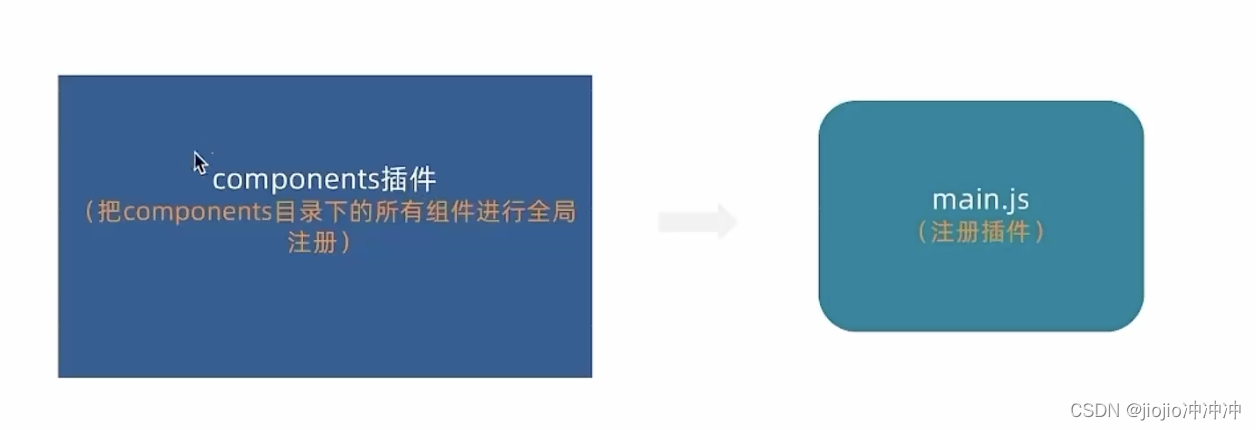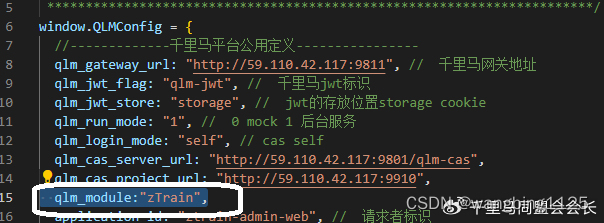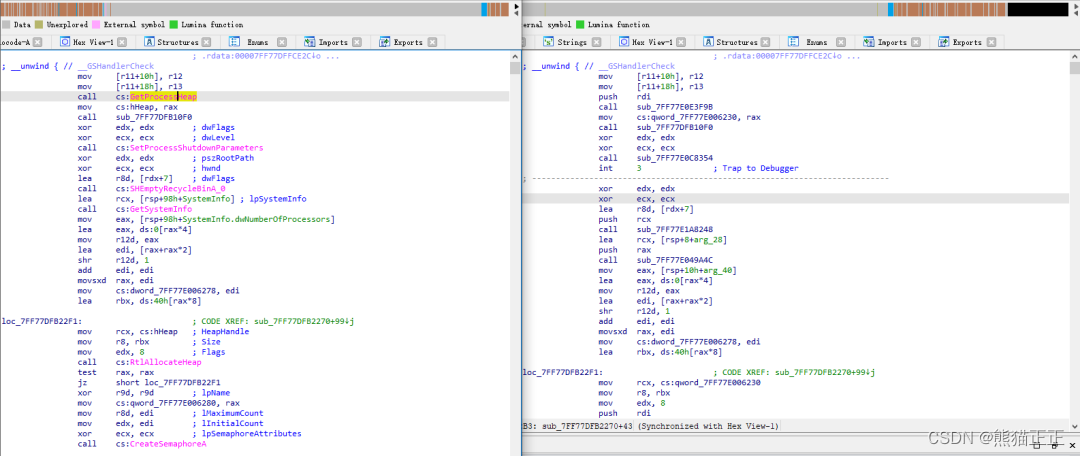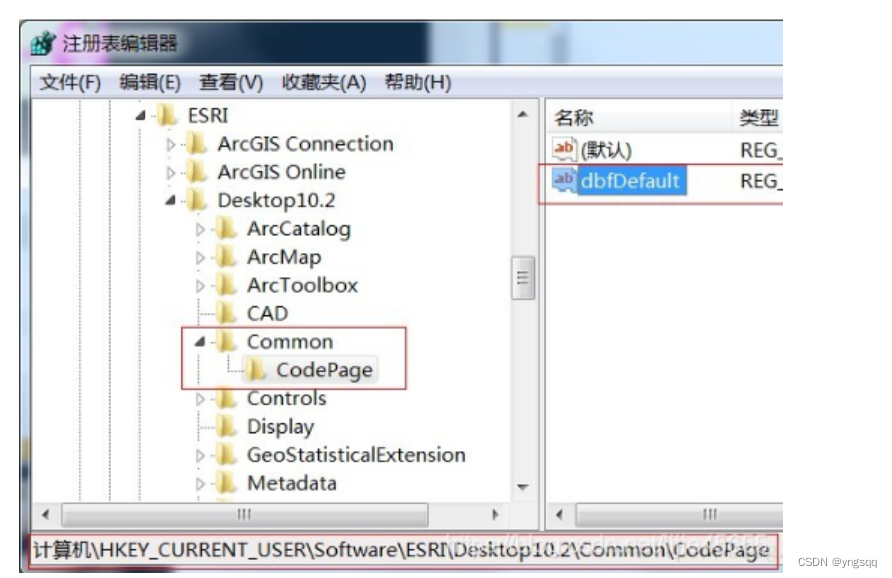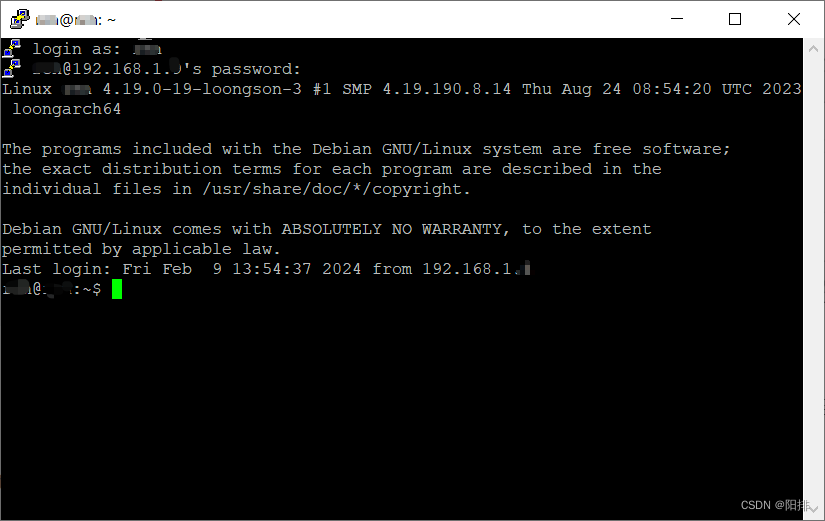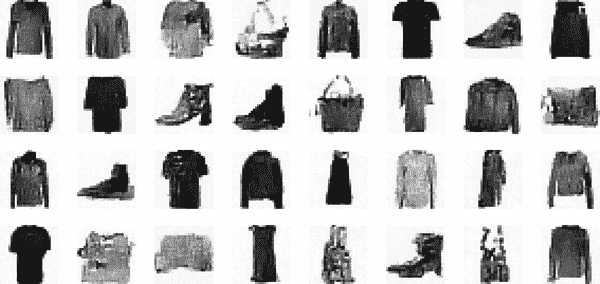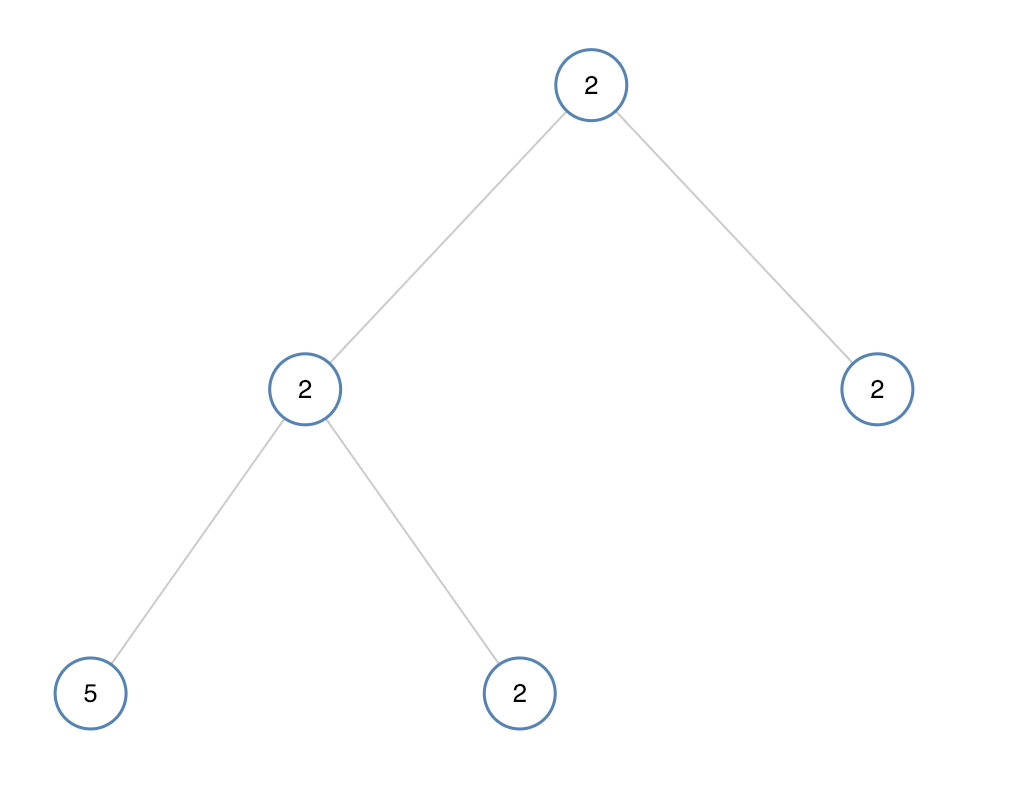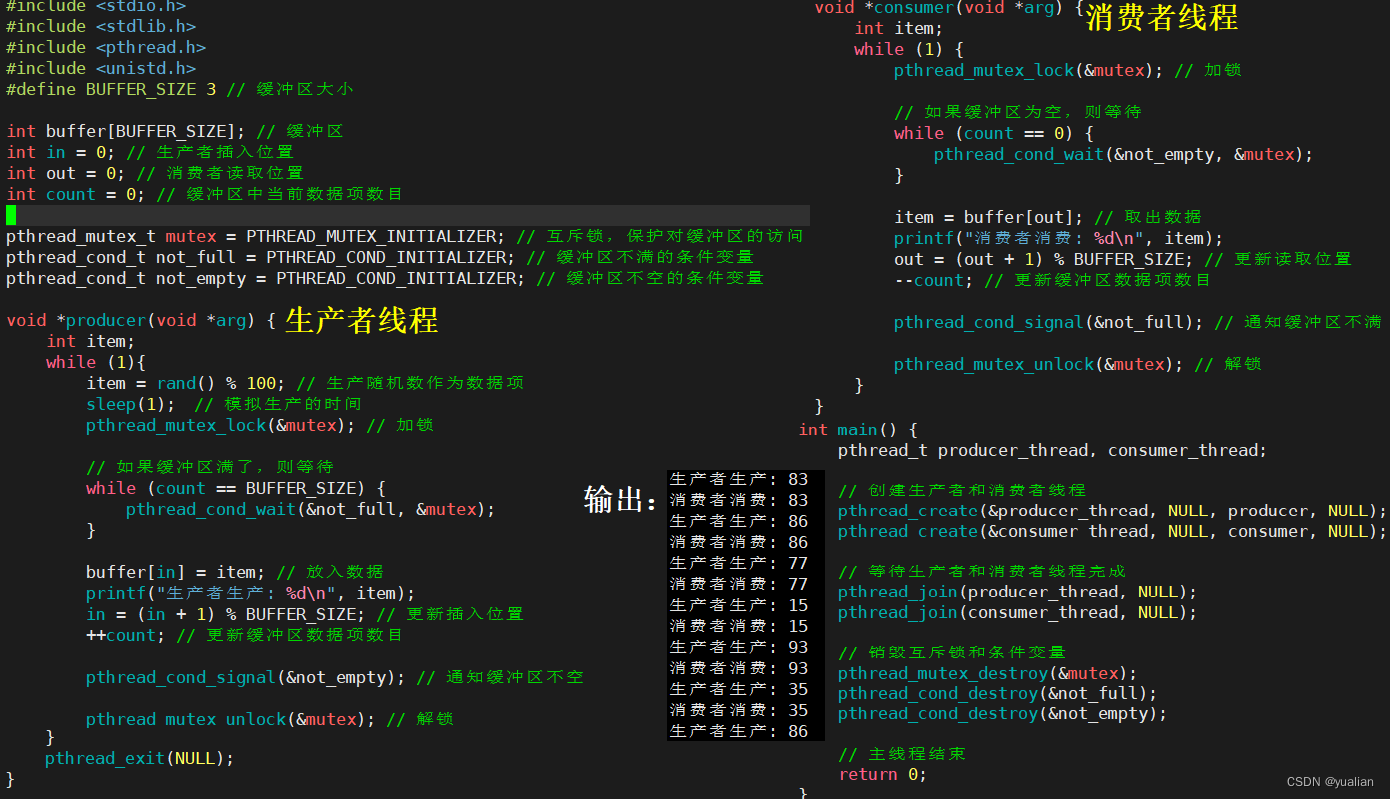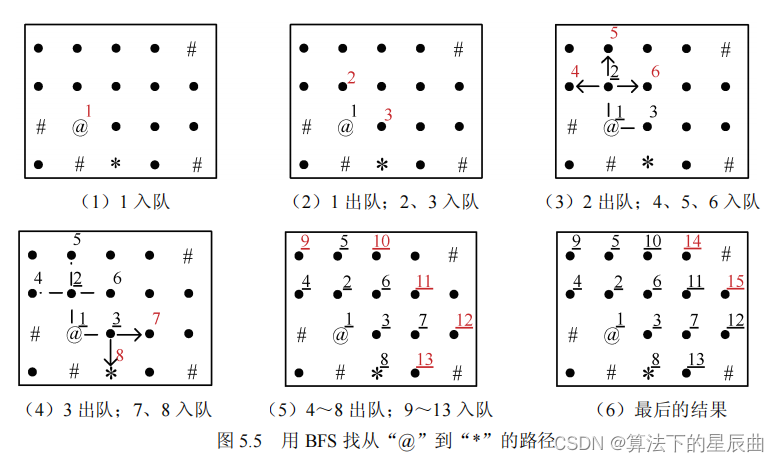Java基础知识(持续更新)
类型转化:数字、字符串、字符之间相互转化
- 数字 <-> 字符串
// 数字转字符串
// method1
int number = 5;
String str = String.valueOf(number);
// method2
int number = 5;
Integer itr = number; //int装箱为对象,再调用对象的toString方法
String str = itr.toString(); //或者直接 String str = Integer.toString(number);
// method3
int number = 5;
String str = number + "";
// 字符串转数字
String str = "123";
int number = Integer.parseInt(str);
- 字符串 <-> 字符
// 字符串转字符
// method 1 单个字符
String str = "123";
char ch = str.charAt(0); //charAt(index)方法,这里获取到的字符为1
// method 2
for (int i = 0; i < str.length(); i++) {
System.out.println(str.substring(i, i + 1));
}
// method 3 字符串转成字符数组
String str = "123";
char [] charArray = str.toCharArray();
// 单字符转字符串
// method 1
char ch = '5';
String str = String.valueOf(ch);
// method 2
char ch = '5';
String str = ch + "";
// method 3 字符数组转化成字符串
String newStr = new String(charArray, 0, charArray.length);
- 字符 <-> 数字
// 字符转数字
// method 1
char ch = '5';
int a = ch - '0';
// method 2 ( 字符 -> 字符串 -> 数字 )
// 先把字符转为字符串,再转换为数字
char ch = '5';
String temp = String.valueOf(ch);
int a = Integer.parseInt(temp);
// 数字转字符 ( 数字 -> 字符串 -> 字符 )
// 不能直接转换,因此需借助数字转字符串。
// 首先将数字转为字符串,再获取字符
int number = 5; //注意这里数字只能是个位数并且不能为负
String s = Integer.toString(number);
char ch = s.charAt(0);
- 与数组之间的转化
// String -> char[]
String s = "3456789XJQKA2MF";
char [] charArray = s.toCharArray();
// char[] -> String
String s = new String(charArray, 0, charArray.length);
// 将 ch[i] 设为空 ch[i] = '\0'
// List -> Integer
List<Integer> nums
Integer[] arr = nums.toArray(new Integer[0]);
String类
使用 String 类的 replace() 方法来实现这个功能: replace(“target”,“replacement”)
如果你想将引号添加到字符串中,你可以使用转义字符 \" 来表示双引号。
String str1 = "abcdefg";
String str2 = "bcd";
String result = str1.replace(str2, "");
System.out.println(result); // 输出: aefg
使用 String 类的 concat() 方法来实现这个功能: contact(String s)
也可以用StringBuilder类来添加,空间效率更快
String s = "菜鸟教程";
s = s.concat("网址:").concat("www.runoob.com");
System.out.println(s); //输出 菜鸟教程网址:www.runoob.com
- equals() 方法
String str1 = "abc";
String str2 = "123a";
str1.equals(str2); //输出 false
"abc".equals(str2); //输出 true
- equalsIgnoreCase() 方法 --不区分大小写
String str1 = "abc";
String str2 = "ABC";
System.out.println(str1.equalsIgnoreCase(str2)); // 输出 true
- compareTo() 方法
compareTo() 方法用于按字典顺序比较两个字符串的大小,该比较是基于字符串各个字符的 Unicode 值。
String str1 = "A";
String str2 = "a";
System.out.println(str1.compareTo(str2)); // a - A 输出 32
System.out.println(str2.compareTo(str1)); // A - a 输出 -32
System.out.println(str2.compareTo("a")); // 相同输出 0
contains() 方法
String str = "abcdef";
boolean statue = srt.contains("bc"); // statue = true;
-
substring(int beginIndex)- 这个版本的
substring方法从指定的索引位置开始,提取字符串的一部分,一直到字符串的末尾。
- 这个版本的
-
substring(int beginIndex, int endIndex)-
这个版本的
substring方法从指定的起始索引位置开始,提取字符串的一部分,直到结束索引之前的位置。 -
public class SubstringExample { public static void main(String[] args) { String s = "Hello, world!"; // 第1个substring方法 // 使用单个索引,提取从索引2开始到末尾的子字符串 String substring1 = s.substring(2); System.out.println("Substring 1: " + substring1); // 输出:llo, world! // 第2个substring方法 // 使用两个索引,提取从索引7到索引12之前的子字符串,即 7 - 11 String substring2 = s.substring(7, 12); System.out.println("Substring 2: " + substring2); // 输出:world // 提取索引4之前的子字符串(索引4不包括在内) String substring3 = s.substring(0, 4); System.out.println("Substring 3: " + substring3); // 输出:Hell } }
-
-
int indexOf(String str):- 这个版本的
indexOf方法用于查找指定子字符串在字符串中第一次出现的索引位置。
- 这个版本的
-
int indexOf(String str,int fromIndex):-
返回从 fromIndex 位置开始查找指定字符在字符串中第一次出现处的索引,如果此字符串中没有这样的字符,则返回 -1。
-
public class IndexOfExample { public static void main(String[] args) { String text = "Hello, world! This is a sample text."; // 第1个indexOf方法 // 查找字符 ',' 第一次出现的索引 int commaIndex = text.indexOf(','); System.out.println( commaIndex); // 输出: 5 // 查找子字符串 "world" 第一次出现的索引 int worldIndex = text.indexOf("world"); System.out.println( worldIndex); // 输出: 7 // 查找不存在的字符或子字符串 int notFoundIndex = text.indexOf("123"); System.out.println( notFoundIndex); // 输出:-1 // 第二个indexOf方法 String t = text.indexOf("o",6); System.out.println( t); // 输出: 8 } }
-
十进制转化为其他进制
public static boolean check(int base, int num){ // 进制位, 转换数
int t = num;
int sum = 0;
while (t != 0){
sum += t % base;
t /= base;
}
return num % sum == 0;
}
System.out.println(n + "的三进制是:" + Integer.toString(n, 3));
System.out.println(n + "的二进制是:" + Integer.toBinaryString(n));
System.out.println(n + "的八进制是:" + Integer.toOctalString(n));
System.out.println(n + "的十六进制是:" + Integer.toHexString(n));
其他进制转为十进制
| r进制转10进制 | 方法 |
|---|---|
| radix进制的字符串s转10进制 | Integer.parseInt((String) s,(int) radix); |
public static void main(String[] args) {
String a = "1001";
int s = Integer.parseInt(a, 2);// 二进制转十进制
System.out.println(s);
}

s = s.toLowerCase(); //转换成小写
s = s.toUpperCase(); //转换成大写
String 方法
下面是 String 类支持的方法,更多详细,参看 Java String API 文档:
| 序号 | 方法描述 |
|---|---|
| 1 | char charAt(int index) 返回指定索引处的 char 值。 |
| 2 | int compareTo(Object o) 把这个字符串和另一个对象比较。 |
| 3 | int compareTo(String anotherString) 按字典顺序比较两个字符串。 |
| 4 | int compareToIgnoreCase(String str) 按字典顺序比较两个字符串,不考虑大小写。 |
| 5 | String concat(String str) 将指定字符串连接到此字符串的结尾。 |
| 6 | boolean contentEquals(StringBuffer sb) 当且仅当字符串与指定的StringBuffer有相同顺序的字符时候返回真。 |
| 7 | [static String copyValueOf(char] data) 返回指定数组中表示该字符序列的 String。 |
| 8 | [static String copyValueOf(char] data, int offset, int count) 返回指定数组中表示该字符序列的 String。 |
| 9 | boolean endsWith(String suffix) 测试此字符串是否以指定的后缀结束。 |
| 10 | boolean equals(Object anObject) 将此字符串与指定的对象比较。 |
| 11 | boolean equalsIgnoreCase(String anotherString) 将此 String 与另一个 String 比较,不考虑大小写。 |
| 12 | [byte] getBytes() 使用平台的默认字符集将此 String 编码为 byte 序列,并将结果存储到一个新的 byte 数组中。 |
| 13 | [byte] getBytes(String charsetName) 使用指定的字符集将此 String 编码为 byte 序列,并将结果存储到一个新的 byte 数组中。 |
| 14 | [void getChars(int srcBegin, int srcEnd, char] dst, int dstBegin) 将字符从此字符串复制到目标字符数组。 |
| 15 | int hashCode() 返回此字符串的哈希码。 |
| 16 | int indexOf(int ch) 返回指定字符在此字符串中第一次出现处的索引。 |
| 17 | int indexOf(int ch, int fromIndex) 返回在此字符串中第一次出现指定字符处的索引,从指定的索引开始搜索。 |
| 18 | int indexOf(String str) 返回指定子字符串在此字符串中第一次出现处的索引。 |
| 19 | int indexOf(String str, int fromIndex) 返回指定子字符串在此字符串中第一次出现处的索引,从指定的索引开始。 |
| 20 | String intern() 返回字符串对象的规范化表示形式。 |
| 21 | int lastIndexOf(int ch) 返回指定字符在此字符串中最后一次出现处的索引。 |
| 22 | int lastIndexOf(int ch, int fromIndex) 返回指定字符在此字符串中最后一次出现处的索引,从指定的索引处开始进行反向搜索。 |
| 23 | int lastIndexOf(String str) 返回指定子字符串在此字符串中最右边出现处的索引。 |
| 24 | int lastIndexOf(String str, int fromIndex) 返回指定子字符串在此字符串中最后一次出现处的索引,从指定的索引开始反向搜索。 |
| 25 | int length() 返回此字符串的长度。 |
| 26 | boolean matches(String regex) 告知此字符串是否匹配给定的正则表达式。 |
| 27 | boolean regionMatches(boolean ignoreCase, int toffset, String other, int ooffset, int len) 测试两个字符串区域是否相等。 |
| 28 | boolean regionMatches(int toffset, String other, int ooffset, int len) 测试两个字符串区域是否相等。 |
| 29 | String replace(char oldChar, char newChar) 返回一个新的字符串,它是通过用 newChar 替换此字符串中出现的所有 oldChar 得到的。 |
| 30 | String replaceAll(String regex, String replacement) 使用给定的 replacement 替换此字符串所有匹配给定的正则表达式的子字符串。 |
| 31 | String replaceFirst(String regex, String replacement) 使用给定的 replacement 替换此字符串匹配给定的正则表达式的第一个子字符串。 |
| 32 | [String] split(String regex) 根据给定正则表达式的匹配拆分此字符串。 |
| 33 | [String] split(String regex, int limit) 根据匹配给定的正则表达式来拆分此字符串。 |
| 34 | boolean startsWith(String prefix) 测试此字符串是否以指定的前缀开始。 |
| 35 | boolean startsWith(String prefix, int toffset) 测试此字符串从指定索引开始的子字符串是否以指定前缀开始。 |
| 36 | CharSequence subSequence(int beginIndex, int endIndex) 返回一个新的字符序列,它是此序列的一个子序列。 |
| 37 | String substring(int beginIndex) 返回一个新的字符串,它是此字符串的一个子字符串。 |
| 38 | String substring(int beginIndex, int endIndex) 返回一个新字符串,它是此字符串的一个子字符串。 |
| 39 | [char] toCharArray() 将此字符串转换为一个新的字符数组。 |
| 40 | String toLowerCase() 使用默认语言环境的规则将此 String 中的所有字符都转换为小写。 |
| 41 | String toLowerCase(Locale locale) 使用给定 Locale 的规则将此 String 中的所有字符都转换为小写。 |
| 42 | String toString() 返回此对象本身(它已经是一个字符串!)。 |
| 43 | String toUpperCase() 使用默认语言环境的规则将此 String 中的所有字符都转换为大写。 |
| 44 | String toUpperCase(Locale locale) 使用给定 Locale 的规则将此 String 中的所有字符都转换为大写。 |
| 45 | String trim() 返回字符串的副本,忽略前导空白和尾部空白。 |
| 46 | static String valueOf(primitive data type x) 返回给定data type类型x参数的字符串表示形式。 |
| 47 | contains(CharSequence chars) 判断是否包含指定的字符系列。 |
| 48 | isEmpty() 判断字符串是否为空。 |
StringBuilder/StringBuffer类
当对字符串进行修改的时候,使用 StringBuffer / StringBuilder 类更方便。和 String 类不同的是,StringBuffer 和 StringBuilder 类的对象能够被多次的修改,并且不产生新的未使用对象。方法类似
public class RunoobTest{
public static void main(String args[]){
StringBuilder sb = new StringBuilder(10);// 创建对象并设置字符序列长度为 10,也可不设置
// StringBuilder/StringBuff 常用方法
// 追加字符 append(String s/ char c)
sb.append("Runoob..");
// 插入字符 insert(int offset, String s)
sb.insert(7, "Java");
// 删除字符 delete(int start, int end)
sb.delete(4,7);
// 替换字符 replace(int start, int end, String str)
// 反转字符 reverse()
sb.reverse();
// 字符串形式表示 toString()
sb.toString()
}
}
StringBuffer 方法
以下是 StringBuffer 类支持的主要方法:
| 序号 | 方法描述 |
|---|---|
| 1 | public StringBuffer append(String s) 将指定的字符串追加到此字符序列。 |
| 2 | public StringBuffer reverse() 将此字符序列用其反转形式取代。 |
| 3 | public delete(int start, int end) 移除此序列的子字符串中的字符。 |
| 4 | public insert(int offset, int i) 将 int 参数的字符串表示形式插入此序列中。 |
| 5 | insert(int offset, String str) 将 str 参数的字符串插入此序列中。 |
| 6 | replace(int start, int end, String str) 使用给定 String 中的字符替换此序列的子字符串中的字符。 |
以下列表列出了 StringBuffer 类的其他常用方法:
| 序号 | 方法描述 |
|---|---|
| 1 | int capacity() 返回当前容量。 |
| 2 | char charAt(int index) 返回此序列中指定索引处的 char 值。 |
| 3 | void ensureCapacity(int minimumCapacity) 确保容量至少等于指定的最小值。 |
| 4 | void getChars(int srcBegin, int srcEnd, char[] dst, int dstBegin) 将字符从此序列复制到目标字符数组 dst。 |
| 5 | int indexOf(String str) 返回第一次出现的指定子字符串在该字符串中的索引。 |
| 6 | int indexOf(String str, int fromIndex) 从指定的索引处开始,返回第一次出现的指定子字符串在该字符串中的索引。 |
| 7 | int lastIndexOf(String str) 返回最右边出现的指定子字符串在此字符串中的索引。 |
| 8 | int lastIndexOf(String str, int fromIndex) 返回 String 对象中子字符串最后出现的位置。 |
| 9 | int length() 返回长度(字符数)。 |
| 10 | void setCharAt(int index, char ch) 将给定索引处的字符设置为 ch。 |
| 11 | void setLength(int newLength) 设置字符序列的长度。 |
| 12 | CharSequence subSequence(int start, int end) 返回一个新的字符序列,该字符序列是此序列的子序列。 |
| 13 | String substring(int start) 返回一个新的 String,它包含此字符序列当前所包含的字符子序列。 |
| 14 | String substring(int start, int end) 返回一个新的 String,它包含此序列当前所包含的字符子序列。 |
| 15 | String toString() 返回此序列中数据的字符串表示形式。 |
Math类
Math.sqrt(16) -> 4
向上取整:Math.ceil(double a) [n/x] = [(n+x-1)/x] 向下取整:Math.floor(double a) 四舍五入取整:Math.round(double a)
例:
Math.ceil(24.1)–> 25
Math.floor(24.8)–> 24
Math.round(24.1)–> 24
Math.round(24.8)–> 25
import java.text.DecimalFormat;
public class Main {
public static void main(String[] args) {
double number1 = 25.00000;
double number2 = 5432.10;
//"#.######"指定了保留六位有效数字,小数点后不足6位不补0
DecimalFormat decimalFormat = new DecimalFormat("#.######");
// 设置最小小数位数为0,不写也可以
decimalFormat.setMinimumFractionDigits(0);
String formattedNumber1 = decimalFormat.format(number1);
String formattedNumber2 = decimalFormat.format(number2);
System.out.println(formattedNumber1); // 输出:25
System.out.println(formattedNumber2); // 输出:5432.1
}
}
import java.math.BigDecimal;
public class HighPrecisionExample {
public static void main(String[] args) {
// 使用字符串构造BigDecimal以确保精度准确
BigDecimal num1 = new BigDecimal("123.456");
BigDecimal num2 = new BigDecimal("789.012");
// 加法
BigDecimal sum = num1.add(num2);
// 减法
BigDecimal difference = num1.subtract(num2);
// 乘法
BigDecimal product = num1.multiply(num2);
// 除法,指定精度和舍入模式
BigDecimal quotient = num1.divide(num2, 10, BigDecimal.ROUND_HALF_UP);
// ROUND_HALF_UP 四舍五入 ROUND_UP(向上取 ROUND_DOWN 向下取
}
}
Number & Math 类方法
下面的表中列出的是 Number & Math 类常用的一些方法:
| 序号 | 方法与描述 |
|---|---|
| 1 | xxxValue() 将 Number 对象转换为xxx数据类型的值并返回。 |
| 2 | compareTo() 将number对象与参数比较。 |
| 3 | equals() 判断number对象是否与参数相等。 |
| 4 | valueOf() 返回一个 Number 对象指定的内置数据类型 |
| 5 | toString() 以字符串形式返回值。 |
| 6 | parseInt() 将字符串解析为int类型。 |
| 7 | abs() 返回参数的绝对值。 |
| 8 | ceil() 返回大于等于( >= )给定参数的的最小整数,类型为双精度浮点型。 |
| 9 | floor() 返回小于等于(<=)给定参数的最大整数 。 |
| 10 | rint() 返回与参数最接近的整数。返回类型为double。 |
| 11 | round() 它表示四舍五入,算法为 Math.floor(x+0.5),即将原来的数字加上 0.5 后再向下取整,所以,Math.round(11.5) 的结果为12,Math.round(-11.5) 的结果为-11。 |
| 12 | min() 返回两个参数中的最小值。 |
| 13 | max() 返回两个参数中的最大值。 |
| 14 | exp() 返回自然数底数e的参数次方。 |
| 15 | log() 返回参数的自然数底数的对数值。 |
| 16 | pow() 返回第一个参数的第二个参数次方。 |
| 17 | sqrt() 求参数的算术平方根。 |
| 18 | sin() 求指定double类型参数的正弦值。 |
| 19 | cos() 求指定double类型参数的余弦值。 |
| 20 | tan() 求指定double类型参数的正切值。 |
| 21 | asin() 求指定double类型参数的反正弦值。 |
| 22 | acos() 求指定double类型参数的反余弦值。 |
| 23 | atan() 求指定double类型参数的反正切值。 |
| 24 | atan2() 将笛卡尔坐标转换为极坐标,并返回极坐标的角度值。 |
| 25 | toDegrees() 将参数转化为角度。 |
| 26 | toRadians() 将角度转换为弧度。 |
| 27 | random() 返回一个随机数。 |
Arrays类
//一维数组
int [] a = new int [10];
// 二维数组
String[][] s = new String[3][4];
//或 列可以先不写,后面要创建
String[][] s = new String[2][];
s[0] = new String[2];
s[1] = new String[3];
//定义包含 first 属性的类
class MyObject {
int first;
// 构造函数
public MyObject(int first) {
this.first = first;
}
}
public class Main {
public static void main(String[] args) {
// 创建一个包含三个 MyObject 对象的数组
MyObject[] myArray = new MyObject[2];
// 初始化数组中的每个元素
myArray[0] = new MyObject(10);
myArray[1] = new MyObject(20);
myArray[0].first = 12;
// 访问数组中的第一个元素的 first 属性
int value = myArray[0].first;
System.out.println("Value of first in the first element: " + value);
// Value of first in the first element: 12
}
}
JDK 1.5 引进了一种新的循环类型,被称为 For-Each 循环或者加强型循环,它能在不使用下标的情况下遍历数组。
for(type element: array)
{
System.out.println(element);
}
double[] myList = {1.9, 2.9, 3.4, 3.5};
// 打印所有数组元素
for (double element: myList) {
System.out.println(element);
}
一维数组填充
int [] map = new int [5];
Arrays.fill(map,1); // 将 map数组 填充为 1
二维数组填充
int[][] map=new int[4][5];
Arrays.fill(map,-1); // 失败
int[][] map=new int[4][5];
int[] ten=new int[10];
Arrays.fill(ten, -1);
Arrays.fill(map,ten); // 成功
//特别注意:map 的每一项指向的都是同一个一维数组 ten。修改一个会影响其他地址的值 ,
//如:修改 map[0][1] = 100 ,则 map[1][1] ,map[2][1]等都是100.
// 升序
Arrays.sort(int[] a); // 从小到大,升序
Arrays.sort(int[] a, int fromIndex, int toIndex);//对数组部分排序,区间左闭右开
//多维数组
// 先f[0]升序,若f[0]相同,按f[1]降序
Arrays.sort(f, (o1, o2) -> o1[0] == o2[0] ? o2[1] - o1[1] : o1[0] - o2[0]);//排序
建议使用Collections.sort()方法,比Arrays.sort()效率高
public static void sort(int[] arr) {
List<Integer> list = new ArrayList<>();
for (int i : arr) {
list.add(i);
}
Collections.sort(list);
for (int i = 0; i < arr.length; i++) {
arr[i] = list.get(i);
}
}
// 降序
//首先要注意的是不能用int这个类型了,要用Integer,不能使用基本类型(int,double, char)
//如果是int型需要改成Integer,float要改成Float
import java.util.Arrays;
import java.util.Collections;
import java.util.Comparator;
public class Main {
public static void main(String[] args) {
Integer[] arr2={1,4,3,6,7,9,11};
Arrays.sort(arr2, Collections.reverseOrder());
System.out.println(Arrays.toString(arr2));
}
}
// 冒泡排序:降序
public static void sort(int[] arr) {
int n = arr.length;
for (int i = 0; i < n - 1; i++) {
for (int j = 0; j < n - 1 - i; j++) {
// 如果相邻元素逆序,则交换它们
if (arr[j] < arr[j + 1]) {
int temp = arr[j];
arr[j] = arr[j + 1];
arr[j + 1] = temp;
}
}
}
}
Arrays.equals() 适用于一维数组的比较。
Arrays.deepEquals() 更适合用于多维数组,特别是当数组中包含其他数组时。
例子:
int[] arr1 = {1, 2, 3};
int[] arr2 = {1, 2, 3};
boolean judge = Arrays.equals(arr1, arr2)); // true
int[][] matrix1 = {{1, 2}, {3, 4}};
int[][] matrix2 = {{1, 2}, {3, 4}};
boolean judge =Arrays.deepEquals(matrix1, matrix2); // true
// 方法源代码
public static boolean equals(long[] a, long[] a2) {
if (a.length != a2.length) return false;
for (int i = 0; i < a.length; i++) {
if (a[i] != a2[i]) return false;
}
return true;
}
public static int binarySearch(Object[] a, Object key)
用二分查找算法在数组中搜索给定值的对象(Byte,Int,double等)。数组在调用前必须排序好。如果查找值包含在数组中,则返回索引;否则返回 -1
Arrays.binarySearch(数组, 开始, 结束, 值);
Arrays.binarySearch( arr , 0 , 10 , 5 );在下表为 0 - 9 中搜索
public static void main(String[] args) {
int[] array = {5, 2, 9, 1, 5, 6};
// 对数组进行排序
Arrays.sort(array);
// 要查找的值
int targetValue = -9;
// 使用binarySearch查找值的下标
int index = Arrays.binarySearch(array, targetValue);
System.out.println(index);
}
Arrays.asList()方法
String[] a = {"apple", "banana", "orange", "grape"};
List<String> list = new ArrayList<>(Arrays.asList(a));
// 不支持结构修改(add、remove 操作)
List<String> list = Arrays.asList(a);
Integer类
String sContentValue = "1234567";
boolean bCheckResult = true;
try
{
Integer iCheckValue = Integer.parseInt(sContentValue);
if (iCheckValue instanceof Integer == false){
bCheckResult = false;
}
}
catch(NumberFormatException e)
{
bCheckResult = false;
}
Collection类

只有List集合可以使用Collections.sort(List list)进行排序,若为其他类型集合转化为List集合
Collections.sort(List list)方法(升序排序)
Collections.sort(List list, Collections.reverseOrder());对有序集合降序排序(降序排序)
import java.util.ArrayList;
import java.util.Collections;
import java.util.List;
public class Main {
public static void main(String[] args) {
List<Integer> numbers = new ArrayList<>();
numbers.add(5);numbers.add(2);
numbers.add(8);numbers.add(1);
// 使用Collections.sort()方法升序排序
Collections.sort(numbers);
// 降序排序
// 法1:推荐
Collections.sort(numbers, Collections.reverseOrder());
// 法2:Lambda 表达式的排序降序排序
Collections.sort(b, (x,y)->y-x);
//或
list.sort((o1, o2) -> o2 - o1);
}
}
遍历ArrayList
import java.util.*;
public class Test{
public static void main(String[] args) {
List<String> list=new ArrayList<String>();
list.add("Hello");list.add("World");list.add("HAHAHAHA");
//第一种遍历方法使用 For-Each 遍历 List
for (String str : list) { //也可以改写 for(int i=0;i<list.size();i++) 这种形式
System.out.println(str);
}
//第二种遍历,把链表变为数组相关的内容进行遍历
String[] strArray=new String[list.size()];
list.toArray(strArray);
for(int i=0;i<strArray.length;i++) //这里也可以改写为 for(String str:strArray) 这种形式
{
System.out.println(strArray[i]);
}
//第三种遍历 使用迭代器进行相关遍历
Iterator<String> ite=list.iterator();
while(ite.hasNext())//判断下一个元素之后有值
{
System.out.println(ite.next());
}
}
}
遍历Map
import java.util.*;
public class Test{
public static void main(String[] args) {
Map<String, String> map = new HashMap<String, String>();
map.put("1", "value1");map.put("2", "value2");map.put("3", "value3");
//第一种:普遍使用,二次取值
System.out.println("通过Map.keySet遍历key和value:");
for (String key : map.keySet()) {
System.out.println("key= "+ key + " and value= " + map.get(key));
}
//第二种
System.out.println("通过Map.entrySet使用iterator遍历key和value:");
Iterator<Map.Entry<String, String>> it = map.entrySet().iterator();
while (it.hasNext()) {
Map.Entry<String, String> entry = it.next();
System.out.println("key= " + entry.getKey() + " and value= " + entry.getValue());
}
//第三种:推荐,尤其是容量大时
System.out.println("通过Map.entrySet遍历key和value");
for (Map.Entry<String, String> entry : map.entrySet()) {
System.out.println("key= " + entry.getKey() + " and value= " + entry.getValue());
}
//第四种
System.out.println("通过Map.values()遍历所有的value,但不能遍历key");
for (String v : map.values()) {
System.out.println("value= " + v);
}
}
}
ArrayList集合–元素可重复有序
import java.util.ArrayList; // 引入 ArrayList 类
ArrayList<E> objectName =new ArrayList<>(); // 初始化
//例如
ArrayList<String> sites = new ArrayList<String>();
- E: 泛型数据类型,泛型String Integer Character Boolean等引用数据类型
- objectName: 对象名。
List<Integer> numbers = new ArrayList<>();
numbers.add(5);numbers.add(2);
numbers.add(8);numbers.add(1);
// 使用Collections.sort()方法升序排序
Collections.sort(numbers);
// 降序排序
// 法1:推荐
Collections.sort(numbers, Collections.reverseOrder());
// 法2:Lambda 表达式的排序降序排序
list.sort((o1, o2) -> o2 - o1);
remove(int index):删除指定索引处的元素。
List<Integer> numbers = new ArrayList<>();
numbers.remove(3); // 删除下标为3的元素
remove(Object o):删除第一次出现的指定元素。
List<Integer> numbers = new ArrayList<>();
Integer a = 3;
numbers.remove(a);// 删除第一次出现的3
List<String> list = new ArrayList<>();
list.remove("abc");// 删除字符串abc
boolean removeAll(Collection<?> c):是否删除另一个集合所有元素
public class RemoveAllExample {
public static void main(String[] args) {
// 创建一个ArrayList
ArrayList<String> list1 = new ArrayList<>(Arrays.asList("apple", "banana", "orange", "grape"));
// 创建另一个ArrayList,包含要移除的元素
List<String> elementsToRemove = Arrays.asList("banana", "grape");
// 使用removeAll移除包含在elementsToRemove中的元素
boolean result = list1.removeAll(elementsToRemove);
if (result) {
System.out.println("移除成功,剩余的元素:" + list1);
} else {
System.out.println("列表未发生改变,没有移除任何元素。");
}
}
}
常用方法
| ArrayList集合常用方法 | |
|---|---|
| 方法 | 描述 |
| add() | 将元素插入到指定位置的 arraylist 中 |
| addAll(Collection c) | 将一个集合所有元素添加到另一个集合 |
| clear() | 删除 arraylist 中的所有元素 |
| clone() | 复制一份 arraylist |
| contains(Object obj) | 判断元素是否在 arraylist |
| get(int index) | 通过索引值获取 arraylist 中的元素 |
| indexOf() | 返回 arraylist 中元素的第一次出现的索引值 |
| removeAll() | 删除存在于指定集合中的 arraylist 里的所有元素 |
| remove() | 删除 arraylist 里的单个元素 |
| size() | 返回 arraylist 里元素数量 |
| isEmpty() | 判断 arraylist 是否为空 |
| subList() | 截取部分 arraylist 的元素 |
| set() | 替换 arraylist 中指定索引的元素 |
| sort() | 对 arraylist 元素进行排序 |
| toArray() | 将 arraylist 转换为数组 |
| toString() | 将 arraylist 转换为字符串 |
ArrayList 常用方法
添加元素:
add(E element): 在列表末尾添加一个元素。
add(int index, E element): 在指定索引位置插入一个元素。
获取元素:
get(int index): 获取指定索引位置的元素。
修改元素:
set(int index, E element): 修改指定索引位置的元素。
删除元素:
remove(int index): 删除指定索引位置的元素。
remove(Object obj): 删除第一个出现的指定元素。
// 如 remove(Integer.valueOf(30);//
clear(): 清空列表中的所有元素。
查找元素:
indexOf(Object obj): 返回指定元素第一次出现的索引,如果不存在则返回 -1。
lastIndexOf(Object obj): 返回指定元素最后一次出现的索引,如果不存在则返回 -1。
contains(Object obj): 判断列表是否包含指定元素。
获得集合大小:
size(): 返回列表中元素的数量。
获得子列表:
subList(int fromIndex, int toIndex): 返回从 fromIndex 到 toIndex 之间的子列表。
isEmpty(): 判断列表是否为空。
数组转换:
toArray(): 将列表转换为数组。
//例如
String[] arr = new String[sites.size()];
sites.toArray(arr);
toString():将Arraylist对象转换为字符串。
HashSet集合–元素不可重复乱序
import java.util.HashSet; // 引入 HashSet 类
//下面两种形式都可以
HashSet<E> sites = new HashSet<E>();
Set<E> set = new HashSet<>();
// 例如:
HashSet<String> sites = new HashSet<String>();
Set<Character> set = new HashSet<>();
获取HashSet元素
// 通过迭代器获取元素
Iterator<String> iterator = linkedHashSet.iterator();
while (iterator.hasNext()) {
String element = iterator.next();
System.out.println(element);
}
// 或者将 LinkedHashSet 转换为数组
String[] array = linkedHashSet.toArray(new String[0]);
for (String element : array) {
System.out.println(element);
}
HashSet 常用方法同 ArrayList 一样,无get()方法
详细参考–菜鸟教程Java HashSet,如下
https://www.runoob.com/java/java-hashset.html
HashSet 按插入顺序排列
用HashSet存储元素,HashSet不保证元素的顺序,它是基于哈希表实现的,元素的存储顺序与它们的哈希码有关,而哈希码与元素的插入顺序无关。
如果你希望输出的元素按照插入的顺序进行排列,你可以考虑使用LinkedHashSet。LinkedHashSet是HashSet的一个子类,它保留了元素的插入顺序。只需稍微修改你的代码,将HashSet替换为LinkedHashSet
如: Set set = new LinkedHashSet<>();
Map类
// 引入 HashMap 类
import java.util.HashMap;
public class RunoobTest {
public static void main(String[] args) {
// 创建 HashMap 对象 Sites
HashMap<Integer, String> Sites = new HashMap<Integer, String>();
// 添加键值对
Sites.put(1, "Google");
Sites.put(2, "Runoob");
Sites.put(3, "Taobao");
Sites.put(4, "Zhihu");
System.out.println(Sites);
}
}
HashMap 常用方法:
| 方法 | 描述 |
|---|---|
| clear() | 删除 hashMap 中的所有键/值对 |
| clone() | 复制一份 hashMap |
| isEmpty() | 判断 hashMap 是否为空 |
| size() | 计算 hashMap 中键/值对的数量 |
| put() | 将键/值对添加到 hashMap 中 |
| putAll() | 将所有键/值对添加到 hashMap 中 |
| putIfAbsent() | 如果 hashMap 中不存在指定的键,则将指定的键/值对插入到 hashMap 中。 |
| remove() | 删除 hashMap 中指定键 key 的映射关系 |
| containsKey() | 检查 hashMap 中是否存在指定的 key 对应的映射关系。 |
| containsValue() | 检查 hashMap 中是否存在指定的 value 对应的映射关系。 |
| replace() | 替换 hashMap 中是指定的 key 对应的 value。 |
| replaceAll() | 将 hashMap 中的所有映射关系替换成给定的函数所执行的结果。 |
| get() | 获取指定 key 对应对 value |
| getOrDefault() | 获取指定 key 对应对 value,如果找不到 key ,则返回设置的默认值 |
| forEach() | 对 hashMap 中的每个映射执行指定的操作。 |
| entrySet() | 返回 hashMap 中所有映射项的集合集合视图。 |
| keySet() | 返回 hashMap 中所有 key 组成的集合视图。 |
| values() | 返回 hashMap 中存在的所有 value 值。 |
| merge() | 添加键值对到 hashMap 中 |
| compute() | 对 hashMap 中指定 key 的值进行重新计算 |
| computeIfAbsent() | 对 hashMap 中指定 key 的值进行重新计算,如果不存在这个 key,则添加到 hasMap 中 |
| computeIfPresent() | 对 hashMap 中指定 key 的值进行重新计算,前提是该 key 存在于 hashMap 中。 |
队列
PriorityQueue 是 Java 中的一个优先队列实现,通过默认情况下是一个小顶堆(元素按升序排列)来实现。如果你希望使用大顶堆(元素按降序排列),你可以通过提供一个 Collections.reverseOrder() 的比较器来实现。以下是用中文描述的代码:
import java.util.Collections;
import java.util.PriorityQueue;
public class Main {
public static void main(String[] args) {
// 创建一个大顶堆优先队列
PriorityQueue<Integer> pq = new PriorityQueue<>(Collections.reverseOrder());
// 添加元素到优先队列
pq.add(3);
pq.add(1);
pq.add(4);
pq.add(1);
pq.add(5);
// 弹出并打印堆顶元素
while (!pq.isEmpty()) {
System.out.println(pq.poll());
}
}
}
IO流
BufferedReader的使用方法
import java.io.*;
public class Main {
public static void main(String[] args) throws IOException {
//创建BufferedReader对象,从键盘读入
BufferedReader br=new BufferedReader(new InputStreamReader(System.in));
String str = br.readLine(); //读取一行字符串,br.readLine()读取的为字符串类型
int n = br.read(); // 读取一个字符,返回对应 ASCII 的值
int a = Integer.parseInt(str); //将字符转化为整型
br.ready();// 判断是否还有下一个,返回类型 boolean
String[] temp=br.readLine().split(" ");//读取一行数据并用空格分隔,存入字符串数组
}
}
// 或
String str1 = null ; // 接收输入内容
try{
str1 = br.readLine() ; // 只能读取一行数据
}catch(IOException e){
e.printStackTrace() ; // 输出信息
}
import java.io.*;
import java.util.StringTokenizer;
public class Main {
public static void main(String[] args) throws IOException {
BufferedReader br = new BufferedReader(new InputStreamReader(System.in));
String s = br.readLine();
// 使用空格作为分隔符创建StringTokenizer对象
StringTokenizer st = new StringTokenizer(s);
// 获得字符串数量
int n = st.countTokens();
System.out.println(n);
// 遍历并打印每个标记
while (st.hasMoreTokens()) {
String token = st.nextToken();
System.out.println(token);
}
}
}
Scanner的使用方法
import java.util.Scanner;
public class Main {
public static void main(String[] args){
Scanner sc = new Scanner(System.in);//创建Scanner类对象,从键盘读入数据
int temp3 = sc.nextInt();
double temp4 = sc.nextDouble();
boolean temp5 = sc.nextBoolean();// true / false
String temp2 = sc.next();//读取字符直到判断输入结束
String temp1 = sc.nextLine();//读取下一行数据
long temp = sc.hasNextLong();
boolean temp = sc.hasNext(String str);//输入的字符与str比较,返回true/false
sc.hasNext();// 判断是否还有下一个,返回类型 boolean
sc.hasNextLine();// 判断是否还有下一行是,返回类型 boolean
String [] s = sc.nextLine().split(" ");
sc.useDelimiter(" ");//若以空格分隔字符串,需要读取空格才能继续读取
//或者使用一个空的sc.nextLine()跳过空格 PS:此方法可以设置其他分隔符
}
}
基础知识
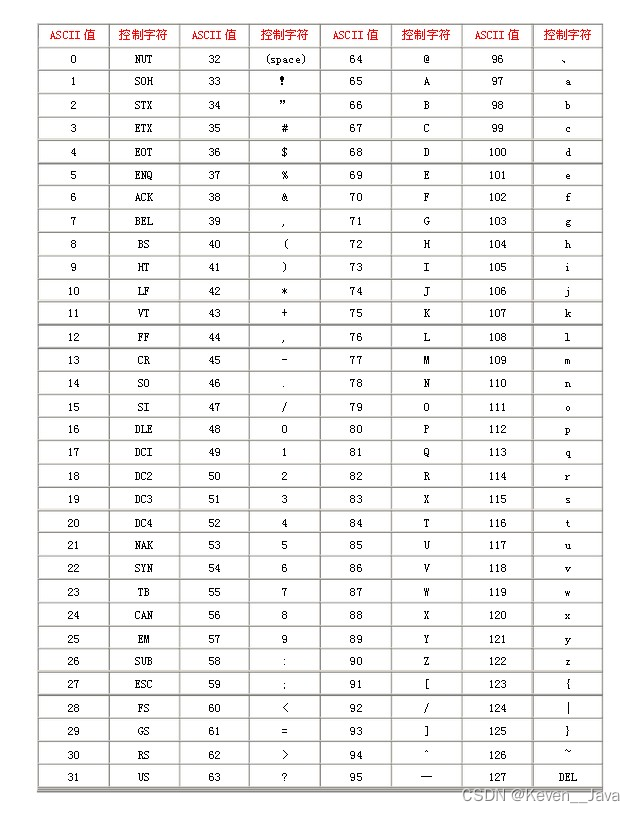
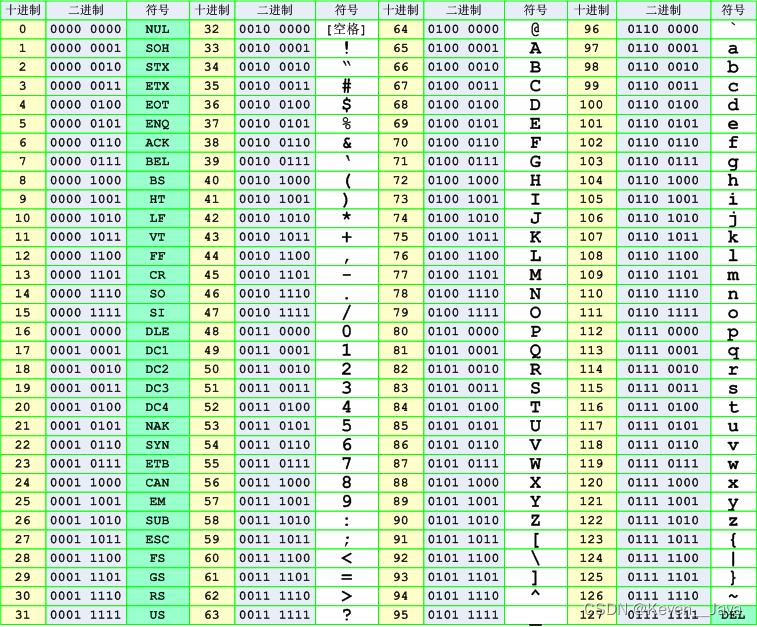
- 按位与(&):对应位上的两个二进制数都为1时,结果为1,否则为0。
result = a & b;
- 按位或(|):对应位上的两个二进制数只要有一个为1时,结果为1,否则为0。
result = a | b;
- 按位异或(^):对应位上的两个二进制数不相同时,结果为1,相同时结果为0。
result = a ^ b;
- 按位取反(~):对二进制数的每一位取反,0变为1,1变为0。
result = ~a;
- 左移(<<):将二进制数向左移动指定的位数,右侧用0填充。
result = a << n;
- 右移(>>):将二进制数向右移动指定的位数,左侧用符号位填充(对于有符号整数)。
result = a >> n;
获取某类型最大值 MAX_VALUE,例如:int a = Integer.MAX_VALUE
-
整数类型:
-
byte: 8位,1字节,范围为 -128 到 127 =2^7-1 -
short: 16位,2字节,范围为 -32768 到 32767 =2^15-1 -
int: 32位,4字节,范围为 -2147483648 到 2147483647 =2^31-1 = 2*10^10 -
long: 64位,16字节,范围为 -9223372036854775808到9223372036854775807 =
2^63-1 = 9 *10^19超过int范围,后面+L 如:
long b = 10000000000L
-
-
浮点数类型:
float: 32位,4字节,范围为约 ±3.4E38double: 64位,64字节,范围为约 ±1.7E308
-
字符类型:
char: 16位,2字节范围为 0 到 65535。表示Unicode字符。
-
布尔类型:
boolean:一般认为1字节 只有两个可能值,true或false。
-
bit(比特) < byte(字节) < kb < mb < gb < tb < pb
1 byte = 8 bit 1 kb = 1024 byte 1mb =1024 kb
1 gb = 1024 mb 1 tb = 1024 gb 1 pb = 1024 tb
-
1s = 1000 ms
// 每个数字占5个位置,右对齐(从最右边输出,在前面补空格)
System.out.printf("%5d",i);
// 每个数字占5个位置,左对齐(从最左边输出,后面补齐空格)
System.out.printf("%-5d",i);
// 输出小数控制
// 说明:%f默认保留6位,.后面的表示的是小数四舍五入保留的位数
System.out.printf("%.2f",3.1415926); //小数点后保留2位,即 3.14
// 输出类型 printf
short -- %hd
long -- %ld
long long -- %lld
boolean -- %b
// 输出 %
System.out.printf("%.2f%%",81.82); //将%输在小数后面,即 81.82%
// 例子
//六位整数+一位小数点+三位小数=_314315.142(右对齐,左边补一个空格)
System.out.printf("%11.3f\n",314315.1415926);
System.out.printf("%10.3f\n",314315.1415926); //6+1+3=10 正好=314315.142
System.out.printf("%11.4f\n",314315.1415926); //6+1+4=11 正好=314315.1426
System.out.printf("%8.3f\n",314315.1415926); //6+1+3>8 正常输出=314315.142
System.out.printf("%14.3f\n",314315.1415926); //6+1+3=14-4 补四个空格=_ _ _ _314315.142
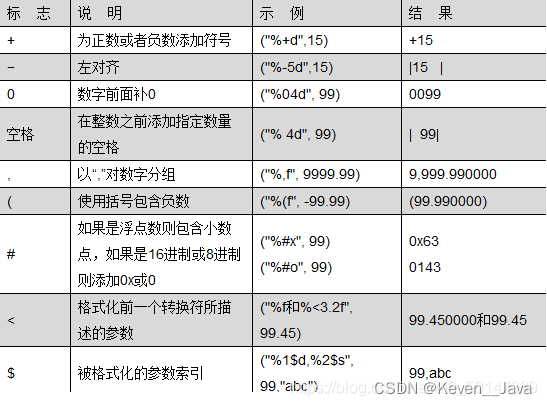
double p = 0.235987565146
// 四舍五入保留4位小数,后面又0省略 如 p = 230.1 -> 230.1
DecimalFormat form=new DecimalFormat("0.####");
System.out.println(form.format(p));//(0.2360后面的0省略) 0.236
其他零碎知识点
str.replaceAll(“6{10,}”, “27”).replaceAll(“6{4,}”, “9”)
// 6出现10次及以上替换为27,出现四次及以上替换为9
// 换行
System.out.println("Hello\nWorld");
//Hello
//World
// 制表符
System.out.println("Hello\tWorld");
//Hello World
// 退格
System.out.println("Hello\bWorld");
//HelloWorld
// 回车
System.out.println("Hello\rWorld");
//Hello
//World
// 单引号和双引号
System.out.println("She said: \"Hello, World!\"");
System.out.println("It's a sunny day.");
//She said: "Hello, World!"
//It's a sunny day.
// 反斜杠自身
System.out.println("This is a backslash: \\");
//This is a backslash: \
// 在正则表达式中,需要使用两个反斜杠来转义一些特殊字符。
// 例如,正则表达式中的 \( 表示 ( 而 \\( 表示 \(
// replaceAll 方法使用正则表达式来替换字符串中的匹配项
String commend = "(al)G(al)()()G";
String s = command.replaceAll("\\(\\)","o").replaceAll("\\(al\\)","al");
System.out.println(s);
